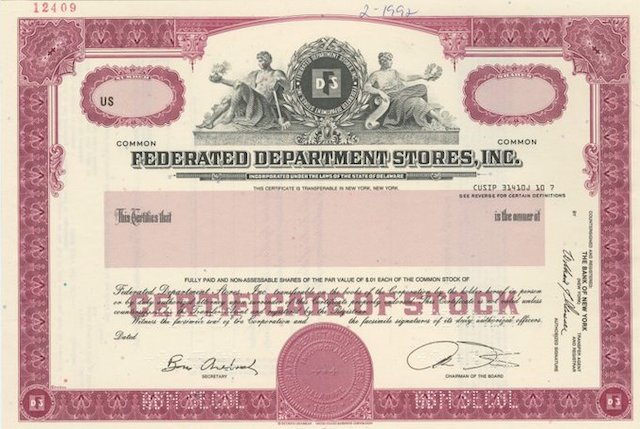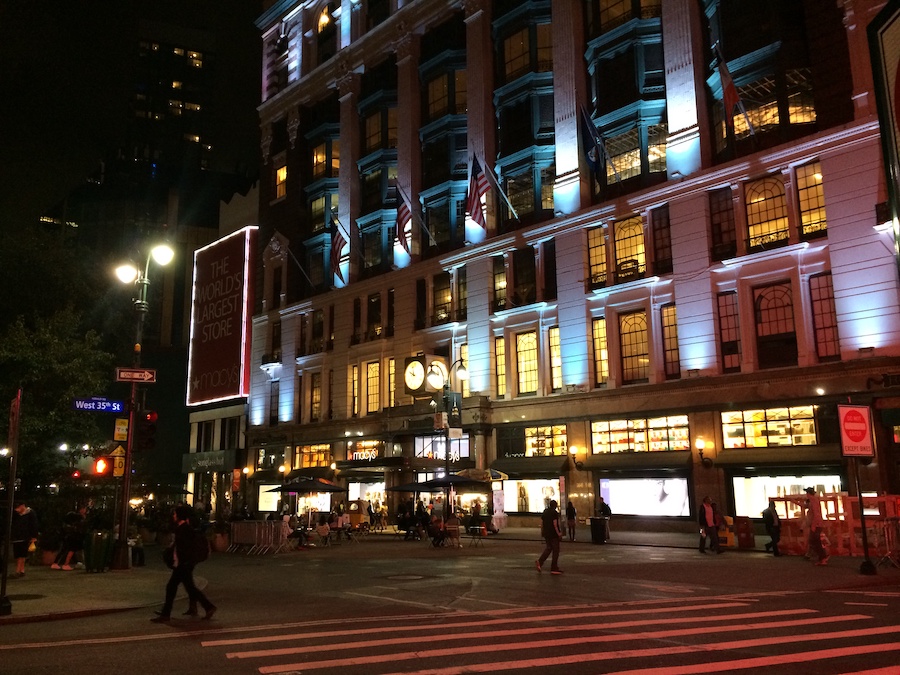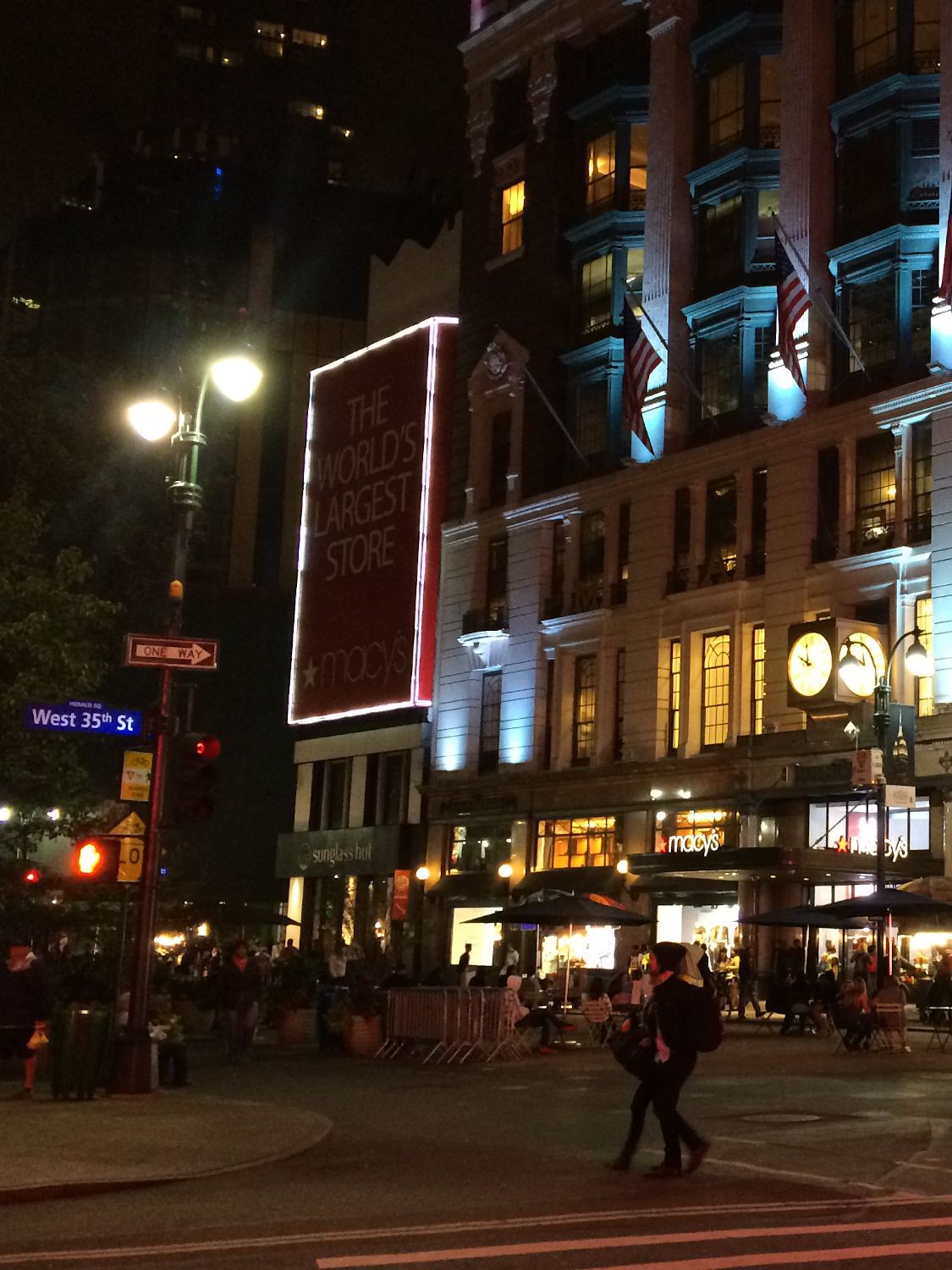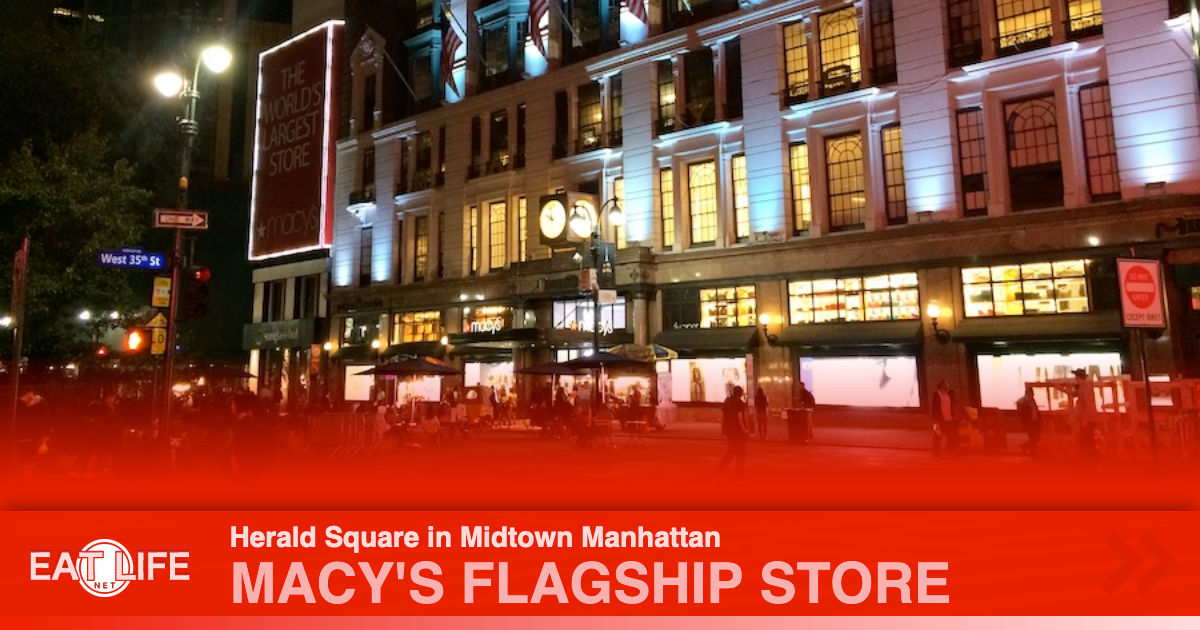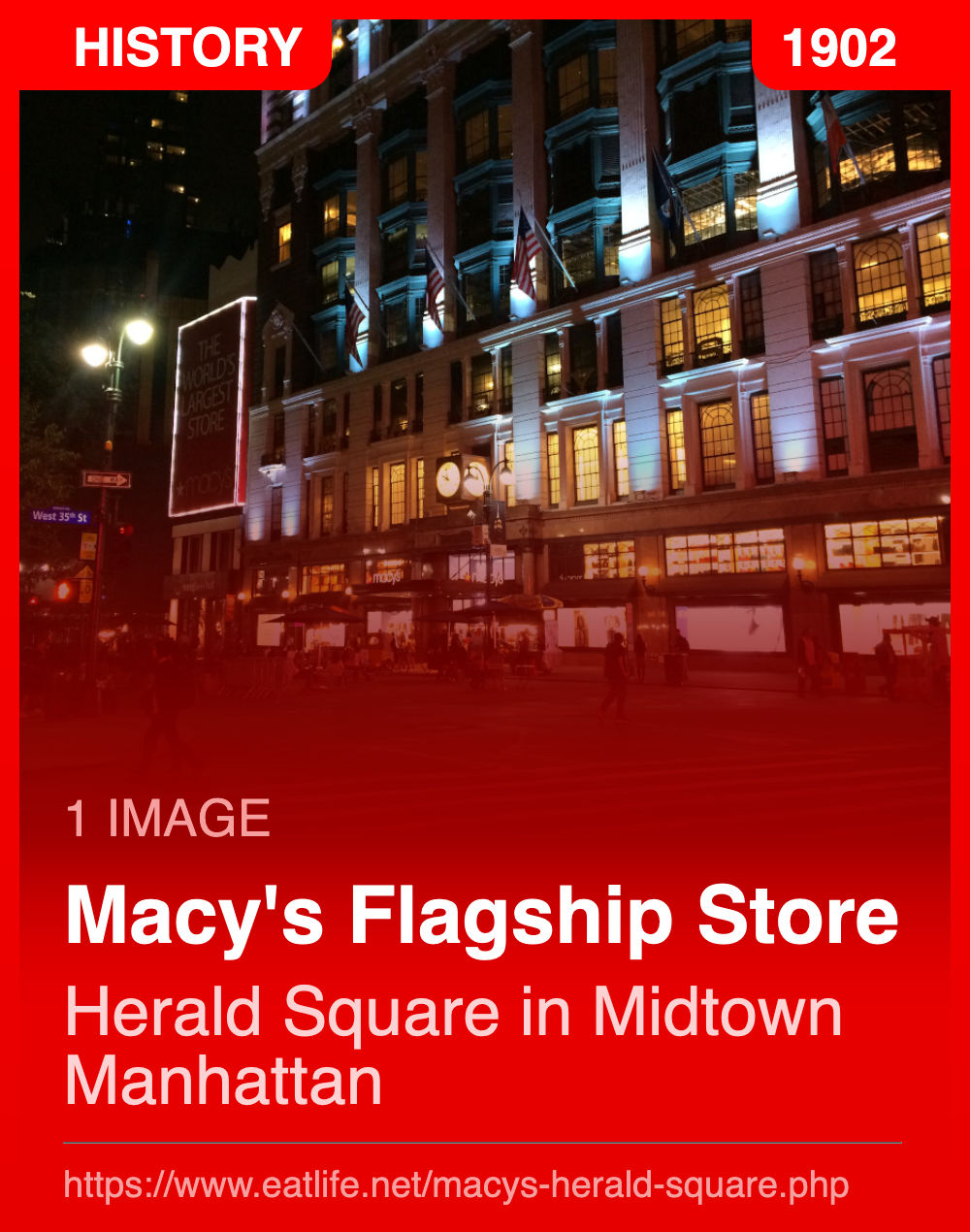Macy's
is a major department store chain. Its principal outlet, the 11-story department store that occupies a city block at New York City's Herald Square (34th Street and Broadway), was for many years physically the largest single store in the country.The company grew out of a partnership founded in Lower Manhattan in 1858 by Rowland H. Macy (1822–77), whose several previous attempts at retailing had all failed. Under the close supervision of Margaret Getchell, a Macy cousin and pioneer businesswoman, the store prospered after the American Civil War, relying on extensive advertising and its reputation for value.
In 1887 Nathan and Isidor Straus agreed to a deal to purchase part interest in the company. The acquisition was made official the following year, and by 1896 they had assumed full control. The Strauses moved the store to its present site and began purchasing or building branch stores around the country.
By the late 20th century, Macy's chain of department stores was managed through regional store groups operating in a number of states under several different names. The company was among the first retailers to place stores in suburban shopping centers, and it now owns or has interests in a number of such shopping centers.
Since 1924 Macy's has held an annual Thanksgiving Day parade in New York City; first televised nationally in 1947.
1851:
The first Macy's Department Store opened its door in Haverhill, Massachusetts to serve the shopping needs of mill workers and their families. It failed, along with three other dry goods stores opened by Rowland Hussey Macy. Not to be discouraged, the hard working retailer set about to find the right customer base for his products. Macy's merchandise was ahead of its time, featuring products like towels in different colors, which was unusual in the 19th century.Opened on 6th Avenue:
His next best idea was opening a store in New York on 6th Avenue. The grand opening made a whopping eleven bucks, which in 1858 was equivalent to around $300. It didn't take long for the Macy's brand to establish itself with sales increasing exponentially until the Macy's name was on everyone's lips as the place to go shopping.Moved to Herald Square:
In 1902, R.H. Macy and Co. moved to its location to Herald Square, at 34th Street and Broadway. Its uptown location and ingenious promotions drew crowds from locals and NYC tourists alike. Macy's was becoming a top employer in New York, from garment buyers to sales clerks. By the 1920s, many women were entering the workplace, and department store career possibilities offered a ladder possible for ambitious females to climb.Macy's Day Parade:
In 1924, the staff of Macy's collaborated to create the first Macy's Day Parade. Although far less extravagant than later years, it had a quarter million attendees. Featuring circus performers and live animal attractions from The Central Park Zoo, it was a major publicity coup for the retailer. The first parade was held on Christmas Day, later to be moved to Thanksgiving, just in time to kick off the holiday shopping season. By 1927, the wild and often scary zoo animals were replaced with balloons and ornate floats. Felix the Cat was among the first giant-sized animated characters that required several hands to keep it from floating out of control. In those days, the balloon was simply cut loose once it had done its duty. Later, due to rubber being scarce during World War II and public concern for injury (once a helium balloon goes up it must come down) the giant characters were deflated and stored away until the next year. The Macy's Parade balloons let you know who is in style, be it Sonic the Hedgehog, Sponge Bob Square Pants, or classic characters back in vogue like Charlie Brown or Popeye, whose large sailor hat collects snow and water if it rains.Miracle on 34th Street:
During the 1940s, Macy's biggest competitor was Gimbel Brothers, known simply to New Yorkers as Gimbels. In 1947, another major publicity venue would rocket both of the stores to iconic status. The movie "Miracle on 34th Street" The store, the actors and of course the happily ever after ending leaves adult and child views with warm feelings plus an unanswered question as to Kris Kringle's real identity. Building a movie plot around retail shopping resonated with folks flocking to the theaters, making "Miracle on 34th Street a must-see holiday classic. The Macy's / Gimbels rivalry rumors boosted sales at both stores for decades.https://classicnewyorkhistory.com/macys-department-store-history-and-info
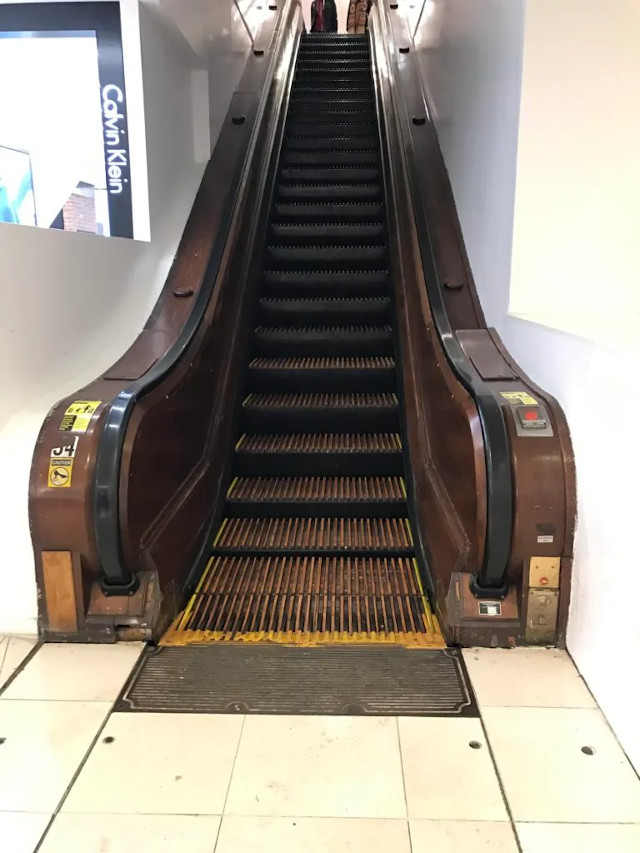
One of the most fascinating aspects of Macy's is that the store still utilizes some of their old wooden escalators. While the majority of Macy's escalators are all modern, riding some of the old wooden ones is a great joy for history buffs.
https://classicnewyorkhistory.com/macys-department-store-history-and-info
The Macy's:
The Macys were one of Nantucket's first settlers, among nine English families who bought the island in 1659 for 30 pounds sterling and two beaver hats, according to Elizabeth Oldham, a research associate at the Nantucket Historical Association.
Thomas Macy a merchant?Rowland Hussey Macy was born on Nantucket in 1822
At the time, the island was part of the New York colony and under the jurisdiction of a governor appointed by the king of England."They came to Nantucket partially to escape the Puritan atmosphere of New England at the time," Oldham said. "They were more free thinkers, and they also came for economic reasons. They farmed, they raised sheep. They were pioneers." The copy of the purchase agreement indicates that it may have been Thomas Macy's occupation as a merchant that prompted the governor to request the beaver hats, which were considered a status symbol during that era. "Beaver hats were considered to be a mark of wealth, only the wealthy could afford to have hats made of beaver," she said.
Red Star Whaling Tatoo:
Sailing was prominent in his family, and at the age of 15 the young Macy became a crew member of the whaling ship the Emily Morgan. According to Oldham, one whaling expedition was enough for Macy. "It didn't suit him," she said. However, legend has it that Macy may or may not have gotten a star tattooed on his arm during that expedition.He left the island:
After a stint on the West Coast during the California Gold Rush, Macy opened a dry goods store in Haverhill, Massachusetts in 1851 before moving to New York, where he started what would become the department store we know today in October 1858.According to Veras, some of Macy's efforts at his Haverhill store translated later into the businessman's establishment of R.H. Macy and Company, including his "one price policy" and his requirement that all purchases were made with cash, not on credit.
When he moved to New York, Macy left his old store logo — a rooster — in Massachusetts, choosing a red star that resembled his tattoo as the emblem for his new enterprise, starting around 1862.
https://www.boston.com/news/history/2017/09/23/how-macys-famous-red-star-has-roots-in-nantucket
Lazarus Straus:
After running unsuccessful stores in Massachusetts and in California during the gold rush, Macy employed a low price strategy and aggressive advertising to develop a fast-growing business. In 1874, he rented space in the basement to Lazarus Straus, his supplier of china, glass, and silverware. The member of a rich European Jewish family, Straus came to the United States after the revolution of 1848. He moved to Georgia, became a peddler, and eventually operated a store, before moving to New York. After R. H. Macy died in 1877, his successor took Straus as a partner in 1888 and sold him the entire store in 1896.The Straus family moved the store to Herald Square (34th Street and Broadway) in 1902. With the completion of its Seventh Avenue expansion in 1924, Macy's became the largest store in the world (2,200,200 square feet). The company built its reputation by advertising heavily and consistently selling merchandise for less than the competition.
The Strauses became one of the richest families in America. Family patriarch Isidor and his wife Ida died on the voyage of the Titanic. His brother Jesse became Ambassador to France.
https://www.encyclopedia.com/history/dictionaries-thesauruses-pictures-and-press-releases/macys
The Straus Family:
Lazarus Straus, the family's patriarch, emigrated in 1852 from Germany to the United States, dissatisfied with Germany's collapsed 1848 revolution. After several years as a peddler, he was able to send for his wife and four children. The family developed a successful general store in Talbotton, Georgia, then moved to New York City in 1867 after the end of the Civil War. Lazarus Straus bought a wholesale chinaware-importing firm and brought his sons Isidor, Nathan, and Oscar into the business, renaming the company L. Straus and Sons.For 13 years the Straus family had leased space in Macy's to operate a chinaware department (the store's most profitable section). In 1887 it generated almost 20 percent of the store's sales. In 1887, Charles Webster became the sole proprietor Macy's, and felt he could not perpetuate singlehandedly. Searching for a partner, Webster approached the Straus family. The Strauses eagerly accepted Webster's offer, the partnership culminating many years' work and launching the family into a social role comparable to that of the Rothschilds in Europe. Lazarus Straus died only a year after buying into Macy's but his sons carried on the business.
Under the new partnership, Macy's matched and outpriced its rivals, including A.T. Stewarts, Hearn's, and Siegel & Cooper. Macy's sales rose to $5 million within a year, and subsequently continued to grow by ten percent annually.
The Straus brothers introduced their odd-price policy, now used virtually everywhere in U.S. retailing. Charging $4.98 instead of $5.00
The store motivated consumers to buy in quantity in order to accumulate substantial savings
They also instituted the store's depositor's accounts, in which shoppers could make deposits with the store and then charge purchases against them.This, in effect, provided Macy's with interest free loans, and was a forerunner of installment buying and layaway plans
1896 - 1918
In 1896 Charles Webster sold his half interest in Macy's to the Strauses, ending the founding family's line of ownership. Jesse, Percy, and Herbert Straus, Isidor's sons, urged their father to relocate the store to its Herald square location at 34th Street and Broadway in 1902. The giant new store cost $4.5 million, but funds were easily raised on the Straus family's good name, built upon the success of Macy's and the independently operated Abraham & Straus, acquired in Brooklyn in 1893.No modern convenience was lacking in the Herald Square store. It was equipped with newly designed escalators, pneumatic tubes to move cash or messages, and an air exhaust system that provided the store with a constant supply of fresh air. Macy's spacious building had ample fitting rooms, accommodation desks, an information counter, and comfortable restrooms. Macy's had a fleet of comparison shoppers who checked out other stores' prices to be sure Macy's merchandise was competitively priced. Sales pushed to $11 million within a year of the move. Called the world's largest store, Macy's Herald Square thrilled tourists and locals alike.
After his father's death, Isidor Straus had emerged as the family patriarch, and remained, among the sons, the most interested in the store. Nathan gradually developed more as a philanthropist than a businessman, and Oscar, after taking a law degree, disregarded the business in favor of politics.
Isidor and his wife, Ida, were among the passengers on the ill-fated voyage of the Titanic.After their deaths in 1912, Isidor's sons Jesse, Percy, and Herbert bought out Nathan's interest in Macy's and ceded their interests in Abraham & Straus to Nathan.
http://www.fundinguniverse.com/company-histories/r-h-macy-co-inc-history
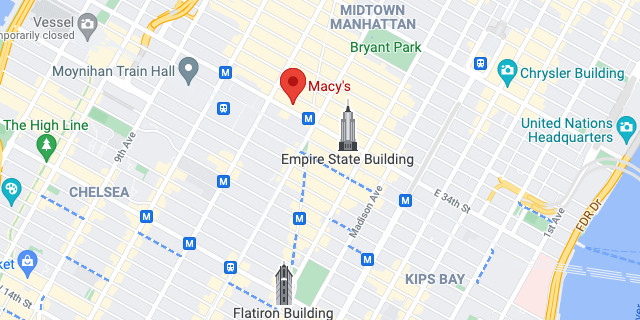
https://www.google.com/maps/place/Macy's
Margaret Getchell:
Nantucket women have a long history in business, taking an active role in running island stores while many men were at sea. It's unsurprising, then, that the person who transformed Macy's into the first modern department store was a woman born and raised on Nantucket. As superintendent of Macy's, Margaret Getchell was one of the first female executives in American retail, giving the store a competitive advantage in marketing to its largely female customer base.Macy's department store, founded by Nantucket native Rowland Hussey Macy, was the first modern department store in the United States, and, at one point, the world's largest. It was also among the first to employ a female executive, something that's still rare in retail today.
In his book History of Macy's of New York, 1858–1919, historian Ralph M. Hower claims that R. H. Macy attributed a large part of his success in New York to Margaret Getchell.
She was hired in an entry-level clerk position. Her aptitude for numbers, as a former math teacher, led to her being promoted to bookkeeper in 1862. In this role, she was not only responsible for managing the store's accounts but for training the "cash girls" as well.
Getchell was not content to just focus on the accounts. She regularly presented new ideas to Macy, and by 1866 had been promoted to superintendent, probably making her one of the first women to hold an executive position in American retail. In this role, she managed the store's routine operations and its predominantly female staff. She is also credited with many of the store's innovations, including:
- Convincing Macy to use his trademark five-pointed, red star on letterhead and price tags;
- Adding new departments, expanding the store beyond ribbons and lace to include jewelry, home furnishings, and gifts;
- Developing window displays to draw in customers, including dressing two cats in doll's clothes and placing them inside baby cribs in order to sell staged cat photos (nineteenth-century Americans loved cats just as much as their twenty-first-century counterparts)
- Adding a trendy new soda fountain at the center of the store, where thirsty customers would have to walk past whole departments before reaching their destination.
Under her stewardship, Macy's tripled in size
Margaret Getchell LaForge died in 1880 at the age of 38, from a combination of ailments. Although her life was short, Margaret Getchell's impact in retail can still be felt today.
"Be everywhere, do everything, and never forget to astonish the customer."
https://nha.org/research/nantucket-history/history-topics/how-a-nantucket-woman-made-macys
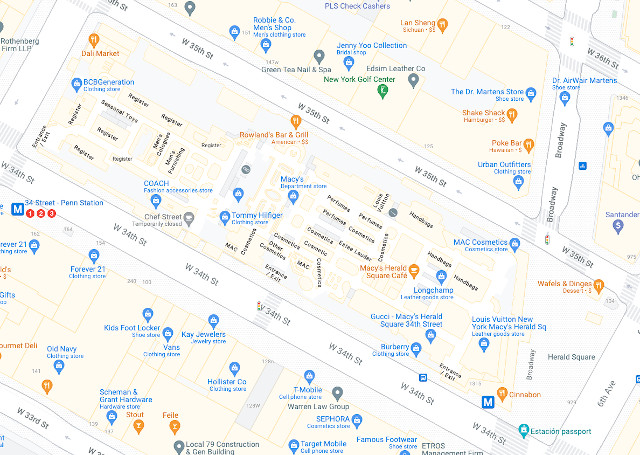
https://www.google.com/maps/place/Macy's
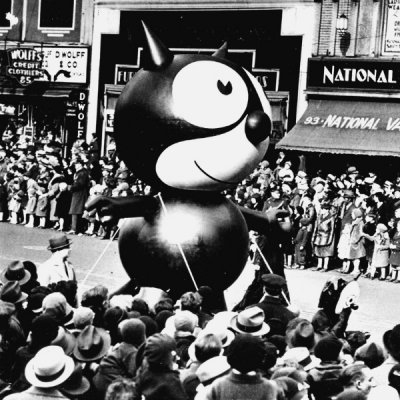
In 1924 employees of Macy's organized a parade featuring floats, costumes, bands, and animals from the Zoo. Santa Claus concluded the parade, ultimately unveiling the store's Christmas Windows. In 1927, the parade was renamed Thanksgiving Day Parade.
- The Parade was not televised until 1946. Before that, the first broadcasts were only on radio. NBC continues to be the official broadcast station of the Macy's Parade since 1939. In recent years, some 50 million+ viewers have tuned in to the NBC broadcast, making it one of the country's most watched televised events.
- By 1933, more than one million people were attending this popular parade in NYC
- Over 250,000 people attended the first Macy's Day Parade in NYC
Felix the Cat debuted in 1927 as the first giant balloon to ever take part in the Macy's Day parade. He was filled with air and not helium. He was held up on stilts as he "flew" through the city. In 1928, Felix was inflated with helium, and without a plan to deflate this massive balloon, parade organizers simply let Felix fly off into the sky. In the early years, balloons were often released after the parade. They contained a return address on them and whoever found the balloon could return the balloon for a prize from Macy's.
- The Macy's Thanksgiving Day Parade was temporarily suspended from 1942-1944 for World War II. In an effort to help America's cause, the rubber used to make the Macy's Day Parade floats were donated to the American Military. The amount of rubber from the deflated balloons that was donated to the US Government for use in the war effort was 650 pounds.
- Macy's Parade floats were pulled by horses until 1939
- Six days after president John F. Kennedy's assassination, the Macy's Thanksgiving Day Parade went ahead as scheduled in hopes to raise the national spirit.
- Snoopy - the Peanuts character created by Charles Schultz, holds the distinction of having the most Thanksgiving Day NYC Parade floats, with eight different versions since 1968.
- Rockettes are an iconic part of the Macy's Thanksgiving Day Parade, but they didn't make their debut in the lineup until 1958.
- According to reports and thanks to the parade, Macy's is the second largest consumer of Helium in the world. Only the US Government consumes more with NASA and DOD leading the charge.
- Santa's Sleigh is the largest float in the Parade at 60 feet long, 22 feet wide, and 3.5 stories tall. The one and only Santa rides his sleigh through the streets of New York City as he makes his way to Macy's Herald Square.
- The original parade was six miles long. Today, the Parade route is 2.65 miles long.
- Although being one of the oldest Parades, Macy's didn't host the first Thanksgiving Day Parade. That distinction goes to Gimbels Thanksgiving Day Parade in Philadelphia which debuted in 1920.
https://www.mybucketlistevents.com/101-fun-facts-about-macys-thanksgiving-day-parade
Groundbreaking Innovations:
Throughout the first 40 years in business, Macy's used then-groundbreaking publicity events like an in-store Santa Claus and lighted window displays to draw in customers. The window displays introduced the concept of "window shopping." Macy also introduced the buying and selling of merchandise with cash only.He eliminated the then-common practice of bargaining for goods, he stated the exact price of products in newspaper ads, he offered money-back guarantees and introduced the tea bag, the Idaho baked potato, and colored bath towels. Macy's in Herald Square had New York City's first liquor license. The store also offered made-to-measure clothing in-house for both men and women.
The Opening Of The Herald Square Macy's:
In 1902, the flagship Macy's store moved to Herald Square, where it remains today.
At the time, the store at 34th Street and Broadway was so far north of other dry goods stores, that Macy's offered a steam-powered shuttle from 14th Street to 34th Street.
The Entire Block:
Over the years, the Herald Square Macy's expanded to occupy almost the entire block bordered by Seventh Avenue, Broadway, 34th Street, and 35th Street. There was one exception, a small five-story building on the corner of 35th and Seventh had been purchased by Robert H. Smith in 1900. His plan was to stop Macy's from building the largest store in the world. It has long been thought that Smith was working on behalf of the company Siegel - Cooper, which built what they thought was the world's largest store in 1896. Macy's ignored Smith's obstruction and just build around the store.The Modern Era:
However successful Macy's has been, it has not been immune to the effects of online shopping and the retail apocalypse. By the end of 2006, Macy's had approximately 850 stores in the U.S.
- In January 2015, Macy's announced that it would close 14 stores across the U.S.
- In September 2015, the company announced that it would close 35 to 40 underperforming stores by early 2016
- In January 2016, Macy's laid off 4,800 employees
- In August 2016, Macy's announced that it would be closing 100 stores in early 2017, laying off 10,000 people
- On January 8 2020, Macy's announced that it would close 29 more stores
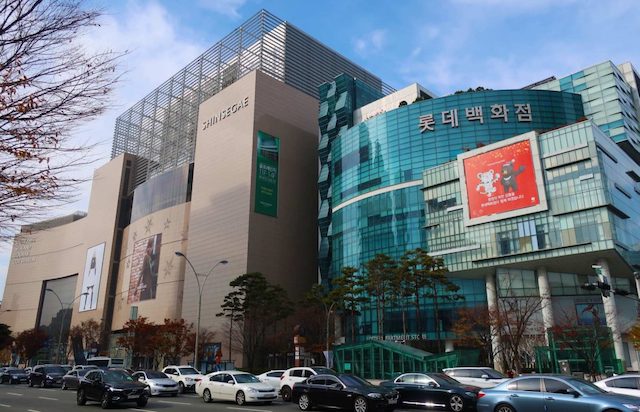
At an area of 3.16 million square feet, this is the largest department store in the world. It's in Busan in the Centum City location of Shinsegae, a Korean department store.
https://upinthenusair.com/2017/12/21/biggest-department-store
| Departments at this Store: | |
|---|---|
| https://l.macys.com/new-york-ny | |
| One Below: |
|
| Lower Level: |
|
| Floor 1: |
|
| Mezzanine: |
|
| Floor 2: |
|
| Floor 3: |
|
| Floor 4: |
|
| Floor 5: |
|
| Floor 6: |
|
| Floor 7: |
|
| Floor 8: |
|
| Floor 9: |
|
